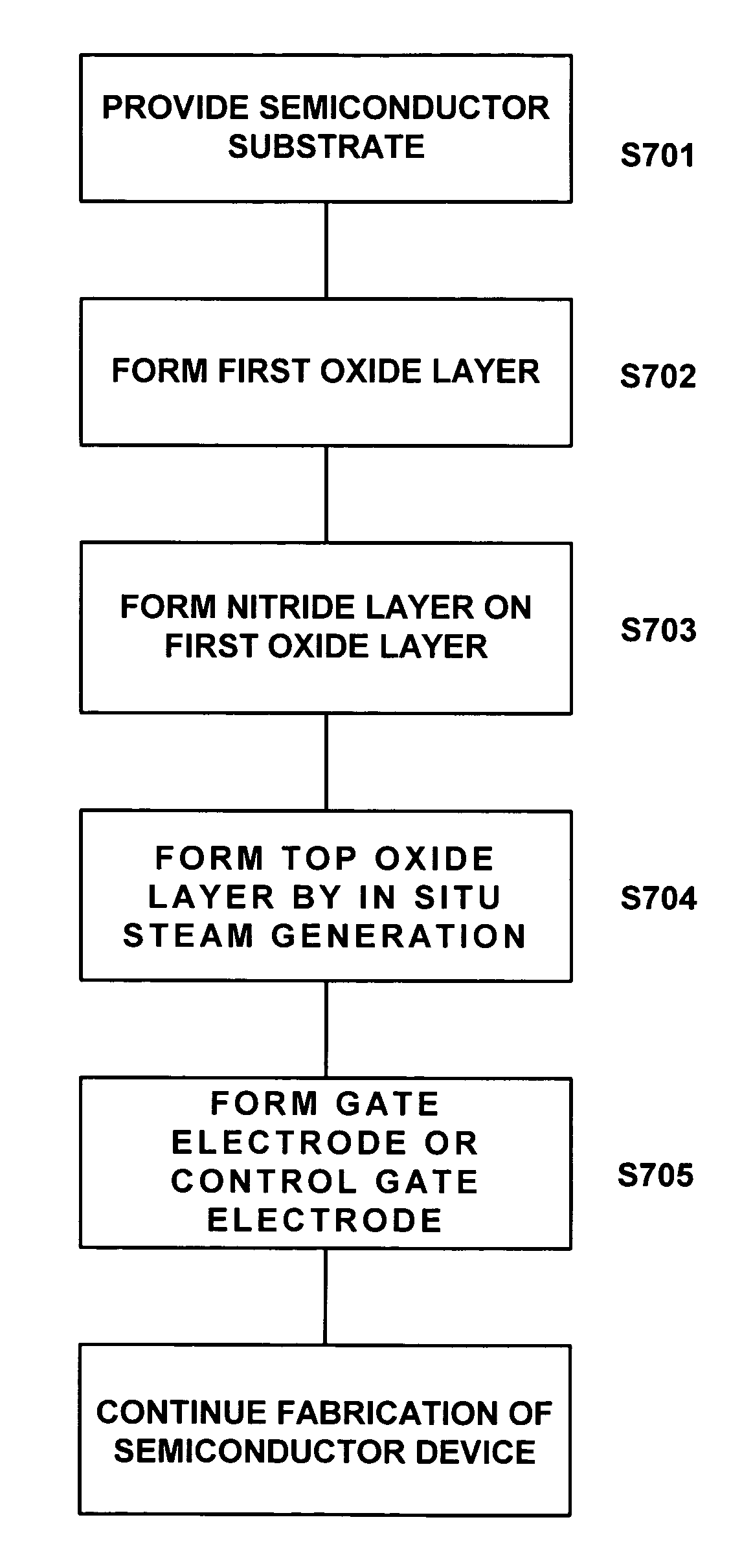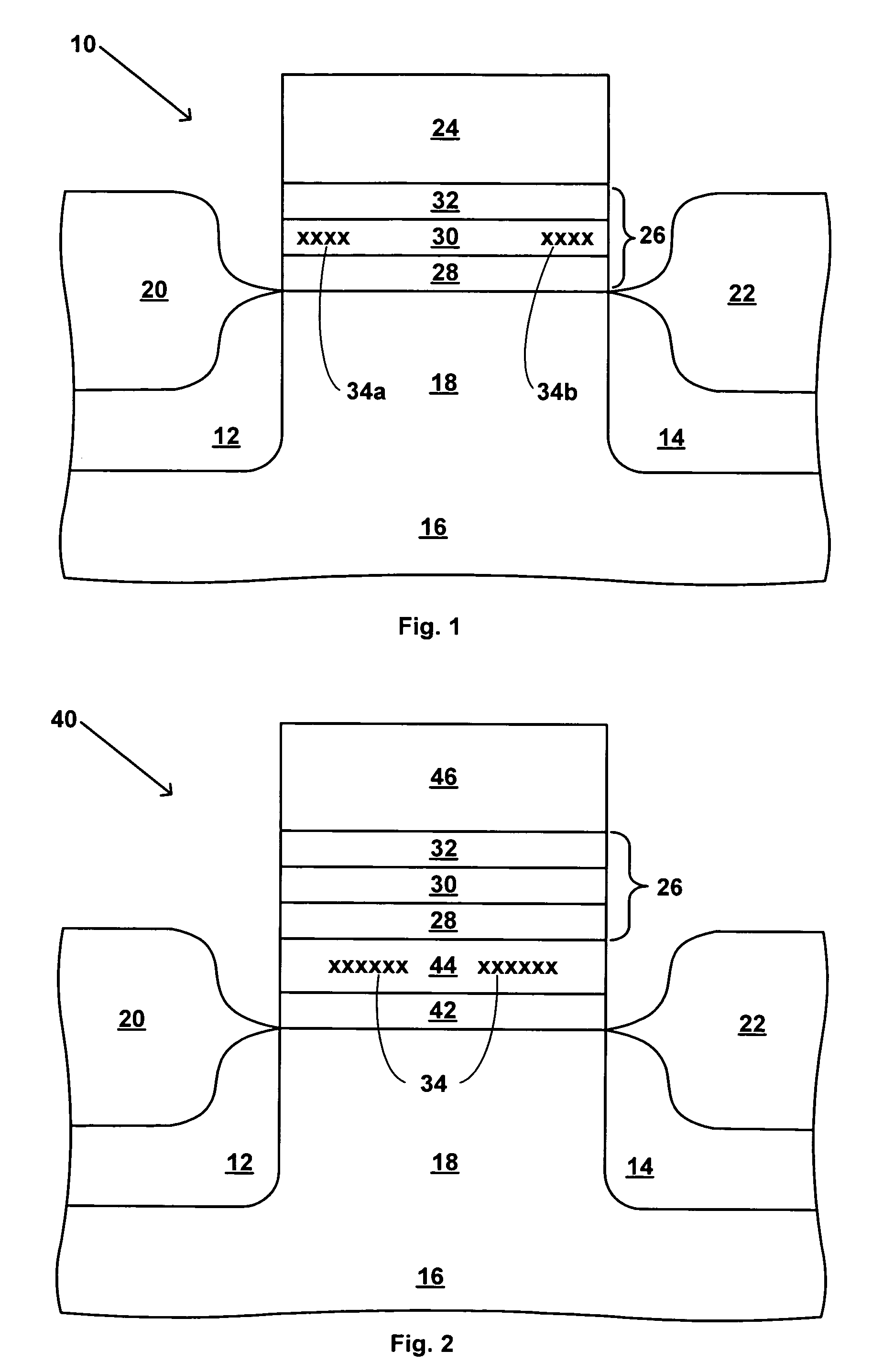Integrated ONO processing for semiconductor devices using in-situ steam generation (ISSG) process
a technology of in-situ steam generation and semiconductor devices, which is applied in the field of semiconductor device preparation, can solve the problems of limiting the scaling down of the total physical thickness of the ono layer, and achieve the effects of less carbon, distinct process and economic advantages, and reduced thermal budg
- Summary
- Abstract
- Description
- Claims
- Application Information
AI Technical Summary
Benefits of technology
Problems solved by technology
Method used
Image
Examples
Embodiment Construction
[0020]Referring first to FIG. 1, there is schematically shown in cross-section a transistor 10 suitable for use in a two-bit EEPROM device, such as the MIRRORBIT™. The transistor 10 includes source / drain regions 12 and 14 located in a semiconductor substrate 16 and separated by a channel region 18. First and second bit line oxide regions 20 and 22 overlie source / drain regions 12 and 14, respectively. A gate electrode 24 overlies the channel region 18 and is separated therefrom by an ONO structure 26. The gate electrode 24 and the ONO structure 26 form a stacked-gate structure. The ONO structure 26 includes a first or tunnel silicon dioxide layer 28, a silicon nitride layer 30 and a top oxide layer 32, in that order as shown in FIG. 1.
[0021]Referring next to FIG. 2, there is schematically shown in cross-section a transistor 40 suitable for use in a floating gate FLASH EEPROM device. The transistor 40 includes source / drain regions 12 and 14 located in a semiconductor substrate 16 and ...
PUM
 Login to View More
Login to View More Abstract
Description
Claims
Application Information
 Login to View More
Login to View More - R&D
- Intellectual Property
- Life Sciences
- Materials
- Tech Scout
- Unparalleled Data Quality
- Higher Quality Content
- 60% Fewer Hallucinations
Browse by: Latest US Patents, China's latest patents, Technical Efficacy Thesaurus, Application Domain, Technology Topic, Popular Technical Reports.
© 2025 PatSnap. All rights reserved.Legal|Privacy policy|Modern Slavery Act Transparency Statement|Sitemap|About US| Contact US: help@patsnap.com



